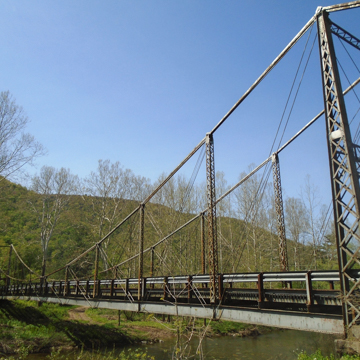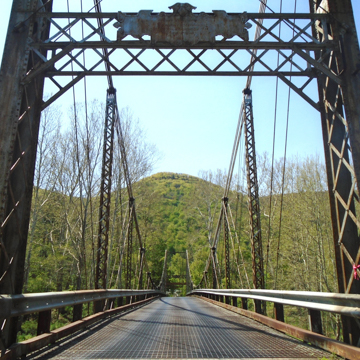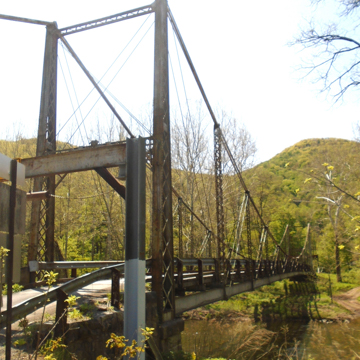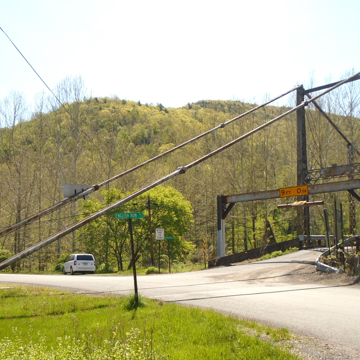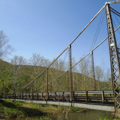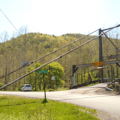Suspension bridges are unusual in Pennsylvania's countryside. This single-span bridge, approximately three hundred feet long, has simple steel towers with eyebars, instead of cables, as the principal suspension members. The deck is suspended from the eyebars with angle and lattice members. The New York firm that erected the bridge also designed the Walnut Street Bridge (1890) in Harrisburg. English Center was named after John English Jr., who arrived in this mountainous area in 1831. Initially named Little Pine Creek, the village was renamed in 1856 when lots were laid out. It is surrounded by state game lands.
You are here
Suspension Bridge
1891, Dean and Westerbrooke, engineers. Little Pine Creek Rd. over Little Pine Creek, English Center
If SAH Archipedia has been useful to you, please consider supporting it.
SAH Archipedia tells the story of the United States through its buildings, landscapes, and cities. This freely available resource empowers the public with authoritative knowledge that deepens their understanding and appreciation of the built environment. But the Society of Architectural Historians, which created SAH Archipedia with University of Virginia Press, needs your support to maintain the high-caliber research, writing, photography, cartography, editing, design, and programming that make SAH Archipedia a trusted online resource available to all who value the history of place, heritage tourism, and learning.















